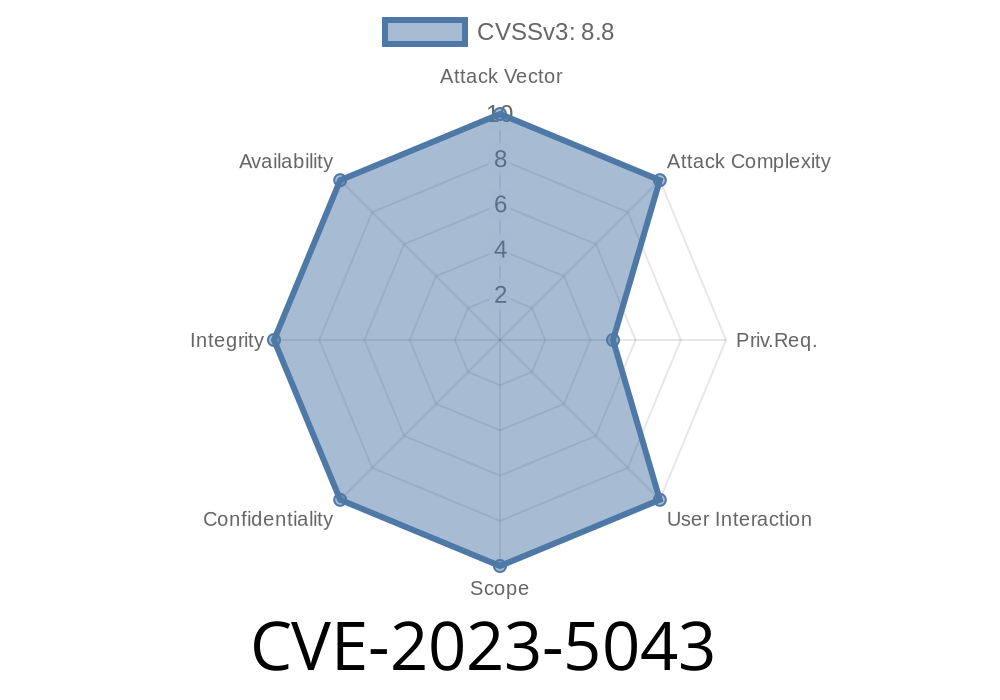A recently disclosed vulnerability, assigned the identifier CVE-2023-5043, poses a significant risk to users of Kubernetes and the NGINX Ingress controller. This critical security flaw enables attackers to inject arbitrary commands through ingress annotations, potentially gaining unauthorized access to sensitive data and compromising system security.
In this post, we will delve into the details of CVE-2023-5043, exploring the exploit and its ramifications. We'll also demonstrate a simple code snippet illustrating potential risks and discuss remediation steps to help you protect your systems from such threats.
Exploit Details
NGINX Ingress controller, a popular component in Kubernetes deployments, provides exposure of HTTP and HTTPS routes from outside a cluster to services within the cluster. Ingress annotations give system administrators the ability to configure additional features or override default behaviors.
The vulnerability (CVE-2023-5043) stems from the improper handling of Ingress annotations and how they affect configuration settings. An attacker with the ability to create or modify Ingress objects may inject arbitrary commands, leading to arbitrary command execution within the affected NGINX Ingress controller.
The following simple example illustrates a potentially malicious ingress.yaml file
apiVersion: networking.k8s.io/v1
kind: Ingress
metadata:
name: malicious-ingress
annotations:
kubernetes.io/ingress.class: "nginx"
nginx.ingress.kubernetes.io/configuration-snippet: |
# Arbitrarily injected command
echo "Injected command executed">&1
spec:
rules:
- host: example.com
http:
paths:
- path: /
pathType: Prefix
backend:
service:
name: example-service
port:
number: 80
By injecting the malicious configuration snippet, an attacker can execute arbitrary commands within the context of the affected NGINX Ingress controller.
Original References
The vulnerability was recently discovered and documented by security researchers. The following resources offer more in-depth information:
- CVE-2023-5043 Official Record
- GitHub Issue Discussing the Vulnerability
To protect your systems from CVE-2023-5043, we recommend the following steps
1. Update the NGINX Ingress controller: Check for updates and apply the latest security patches that address this vulnerability. The official repository should provide you with the necessary updates and installation details.
2. Restrict access to Kubernetes resources: Implement Role-Based Access Control (RBAC), ensuring that only trusted users in your organization can create or modify Ingress objects. This minimizes the risk of unauthorized modifications.
3. Validate configuration snippets: Always validate configuration snippets added to Ingress annotations. Ensure they do not contain any injected commands or malicious code.
4. Monitor: Continuously monitor Kubernetes clusters and the NGINX Ingress controller logs to detect possible intrusion attempts or suspicious activity.
Conclusion
CVE-2023-5043 presents a significant risk to users of Kubernetes and the NGINX Ingress controller. By understanding the exploit, proactively applying patches, and implementing robust security measures, system administrators and developers can mitigate the potential impact of this serious vulnerability.
Be sure to keep an eye on official resources like Kubernetes GitHub and the NGINX Ingress repository for updates and information on potential vulnerabilities to stay ahead of threats.
Timeline
Published on: 10/25/2023 20:15:18 UTC
Last modified on: 11/02/2023 17:54:38 UTC
